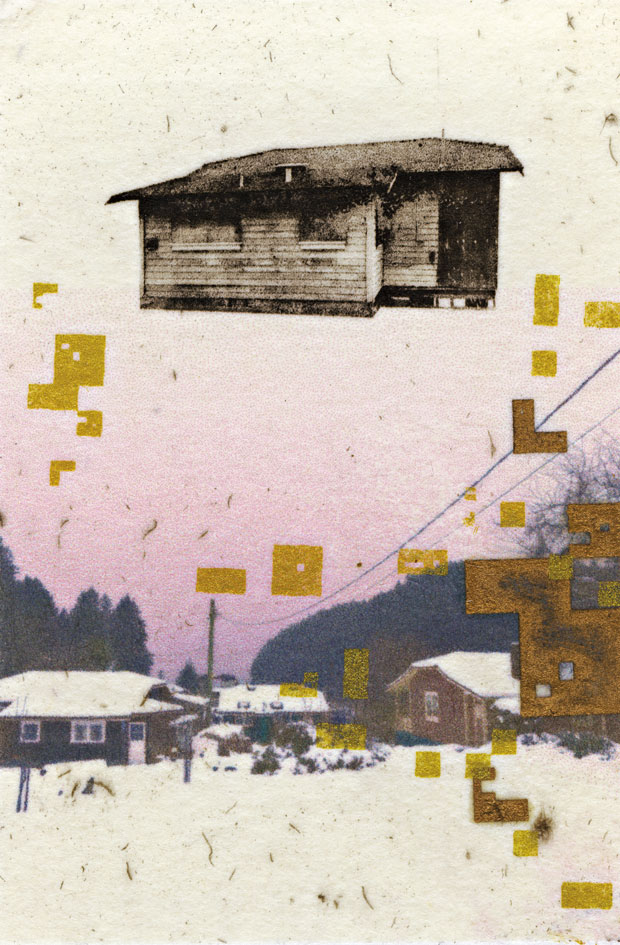.svg)
As the century turns, generational retrospectives are cropping up everywhere—a look back requires only file footage, the cut and paste. Recent books documenting Canadian life in the 195s include Canada in the Fifties (Viking), selections from the archives of Maclean's and A Woman's Place (Key Porter), the Chatelaine equivalent, edited by Sylvia Fraser. These are goofy stories but whether it was the age or our interpretation of it that was goofy, is hard to say. In A Woman's Place, we're given the "Do's and Don'ts of Picking a Hat": "Don't whatever you do, underestimate the importance of a hat. Without a hat, a street costume is unfinished and flavourless" and a female journalist's painful "coming out" entitled "I confess I'm a bleached blond." ("I bleach my hair. There—I've said it and I'm glad. And I'm not hiding behind any pen name.") In the Madean's book we get the Avro Arrow, the Dionne Quints, Marilyn Bell's swim across Lake Ontario. Other stories establish the tonal quality of the era: Will a Machine ever Take your Job? (1955); "Just look at the old Ice-Cream Parlor now!" (1956): "Going Steady: Is it Ruining our Teenagers?" (1959): and "Good¬bye Barney, A Tribute to a Horse that Delivers Milk" (1951), in which the author gets inside Barney's reasoning brain: "He once ate a whole onion, probably in mistake for an apple, but he rejects dill pickles." We are told that "Barney came into the world under bleak and uninspiring circumstances." This is the tale of a cart horse who has lost his muse. You don't have to have been there to know what these were about: soda shops, housewives, bobby socks. As Canadians, our idea of the fifties is inextricably linked to the American iconography of the era. The images we retain are suburban, white, idyllic. The first colour television transmissions opened the decade, a fact that helps to explain the imagistic way we experience the fifties, which feel like television memories. During the fifties Roger Bannister conquered the four-minute mile, Queen Elizabeth II was coronated and the first automatic pinsetter was installed in a New York bowling centre. In 1954, 7-Up was "So pure, so good, so wholesome that everybody—from tiny tots to grandmas" could enjoy it guilt free: Slumber party, gee that's dandy
Look your sharpest everyone!
Snappy PJs come in handy—
"Fresh-Up" parties sure are fun! Canada Post is also taking a look back in a recent series of stamps commemorating the lives of past provincial premiers (192-7), who resemble 195s news broadcasters posing before their blue screens. They are the product of a simpler time when men wore suits and women wore hats to go to town. Several premiers sport the dark-rimmed Walter Cronkite glasses now considered retro-chic, a throwback to days when a politician was not afraid to look the cameraman in the eye. These could be Cold War or FBI file photos: if these men were in a lineup we would be hard pressed to separate them from bit actors auditioning for a guest appearance on Hawaii Five-. These stamps are destined to serve as kitschy fridge magnets, adornment for tongue-in-cheek birthday cards, or, if left near the phone, the subject of endless doodling; they beg for pen and ink augmentation, the addition of appendages, arms, legs, silly bodies, constructed and attached to floating heads. Without memory it's all the respect they can hope for. Like the fifties themselves, this kind of political commemoration is unlikely ever to happen again. In the year 23 might we really expect to see a Mike Harris, or a Glen Clark, or even a Bill Vander Zalm smirking out from a piece of paper we have paid for? It may be safer not to ask.







